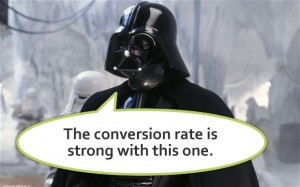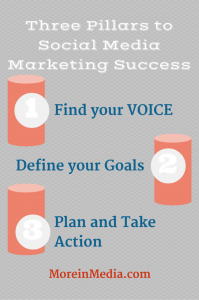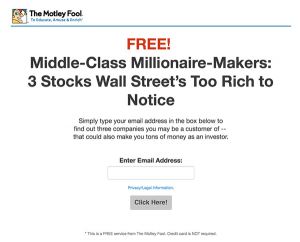Do you remember those teenage dramas from the 1990s, like Beverly Hills 90210, Heartbreak High, and Degrassi High?
In every one of those shows, there was always a “new kid” at school. The guy or girl was usually very attractive, shrouded in mystery, and the exact cause of their appearance was unclear.
What does that have to do with native advertising, you ask?! Well, and bear with me here, native ads are the Brandon and Brenda of advertising: attractive, new, different, and cool. They bring a fresh perspective that threatens to shake up a well established and confident industry — one that has turned into a race for visual attention at any cost.
But the 90s are well in the past and we’re now several episodes into Brandon and Brenda’s story arc. In today’s fast paced world buzz and pixie dust around “new” and “fresh” wear off very quickly. We expect our Tv characters to become well established characters quickly, and provide more depth in order to maintain our interest over time. Are you getting the analogy yet?!

This is where native ads find themselves today. They’re no longer brand new — instead, it’s money time and native advertising needs to demonstrate that it’s an established, familiar form of advertising.
Spending on native ads has increased massively in the past few years — by 2018, it’s expected to reach more than $ 20 billion every year. However, with so much money being thrown at native, advertisers have started to sit up and become more aware of its strengths and weaknesses.
The benefit of advertising hindsight
Unlike TV land, in the business world we have the benefits of looking back at predecessors and learning from them. As advertisers, if we don’t learn from our industry’s history, we’re very likely to repeat it.
15 years ago, banner ads were in the same position as native ads today. They were fun, new and exciting. They had the special pixie dust around them that native ads had a few years ago, and advertisers were desperate to experiment with them at any cost.
Because of this similarity, we can learn a lot about native ads by looking back at the lessons we, as advertisers, learned from banner and display ads in the late 1990s.
Below, we’ve listed five banner and display-inspired lessons that you can (and should) apply to your native advertising strategy to maximize your campaign performance, improve your return on ad spend and avoid repeating the same mistakes many advertisers have made before you.
Native ads are all about performance

When marketing gurus tell you that big advertising budgets aren’t spent on “branding” without any measurable results in mind, it’s best not to listen. At the end of the day, every advertising campaign boils down to figures inside a column, and return on ad spend (ROAS) has always been the metric by which ad campaigns are measured.
Also, when it comes to branding campaigns, even those can be measured by looking at increases in “direct” traffic, social mentions, and greater brand loyalty, which can be measured in the form of average customer life time value.
Just like return on ad spend can determine whether or not a display campaign is effective, it’s a fantastic metric for judging the success of native advertising.
Using Google Analytics or similar software, you can track the conversion rate of your native ads just like you would a display or search campaign. On a large-scale campaign, you’ll notice that different ad creatives and placements each generate a different return on ad spend.
Remember that any form of advertising is all about performance. Optimize your native ads like you would a display or search campaign by split testing different ad creatives, pausing creatives and placements that underperform, and carefully tracking your campaign’s ROAS.

Don’t be afraid to stand out
For most, the major advantage of native advertising is its ability to look and feel like editorial content. Any blogger knows that what readers or viewers are looking for is content not ads. Then making ads appear like content is a major selling characteristic for native ads.
It may seem weird today but display ads weren’t always considered annoying and web visitors were not always blind to them. In fact, they were (and still can be!) a very effective marketing and monetization tool. Clickthrough rates were high*, clicks were cheap, and the revenue share that publishers received kept them smiling.
The world’s first banner ad, which was served in 1994, had a clickthrough rate of 44%. That’s about 440 times the current average clickthrough rate for banner advertising, which is around 0.1%.
Since early banner ads were such great performers from a CTR perspective, marketers and publishers built their analysis around click-based metrics. Ads that got more clicks were judged as successful, while ads that didn’t get clicked on were quickly dismissed as failures.
So what happened? Publishers and advertisers got a bit overzealous with increasing CTR in a way that negatively affected user experience. Over a short period of time, readers who just wanted to read a blog post learned over time to ignore the banner ads that surrounded their content.
Unlike what some would have you believe, this does not mean that banner ads are dead. They can still be an effective marketing and monetization tool but they do require continuous optimization. That being said, native advertising was born because of the diminished effectiveness of banner ads combined with decreased availability of ad inventory real-estate on mobile screens.
The concept behind native advertising is simple but effective: If readers have learned to ignore banner ads placed around content let’s place ads within the content.
When advertisers and publishers saw that placing ads within text blocks nullified “banner blindness” they moved on to the next stage, which was to increase engagement with this new ad type. This is when native ads started to look more and more like editorial long-form content.

As expected, these new ad formats increased, and still do, engagement metrics and provided significant lifts to brand metrics. However, if we’re to learn anything from display advertising it’s that “you can fool some people some of the time but you can’t fool all the people all the time”.
The major criticism hitting native ads in 2016 is very similar to the criticism that banner ads have faced: “You’ve gone too far”. Native ads have become so much like the real thing that readers are increasingly annoyed to find the content they’ve been reading is actually a cleverly disguised advert.
Balance is necessary for native ads to continue to be successful in the long run. Though it may seem counter-intuitive, publishers with a long term monetization strategy would be smart to start effectively distinguishing between native ads and content in a way that balances user experience and monetization.
Don’t want to listen to me? Well, maybe you’ll listen to John Oliver (It’s a must see for any online publisher):
John Oliver is not entirely disconnected from the online publishing industry. Actually, major publishers like Business Insider, Buzzfeed, Gizmodo, Mashable, Popsugar, and more are already clearly distinguishing their sponsored content from their editorial content. If you don’t, you may find that visitors will learn to make the distinctions themselves rendering your native ads useless.
But, sometimes, it’s good to be subtle
Just like many display advertisers prefer to be as loud as possible, many native advertisers take the “bigger and bolder is better” approach to advertising. They approach native advertising as if it were an opportunity to market aggressively, rather than an opportunity to be subtle.
Web users are familiar with advertising, and many readers instinctively avoid ads that stand out as, well, ads. Being subtle in your messaging is a great way to stand out from other advertisers and attract genuine attention from users.
Early Facebook advertisers understood this and tailored their ads to look and feel more social than direct. Today, some of the most effective native ads don’t stand out as advertisements — instead, they blend in as content that’s themed and styled to match the publication.
Here’s an example of a native ad that’s tailored to match the editorial tone of Slate, courtesy of Copyblogger:

At AdNgin we run over 30 million daily ad impressions on various publications and we’ve found that, under certain conditions, the ad that best matches the theme and style of its placement can win the most clicks. In native advertising, matching the editorial tone and style of a publication can be far more effective for earning real attention than standing out through boldness alone.
Fighting for attention is a race to the bottom
Mention banner advertising to a crowd of non-marketers and you’re bound to hear at least one person mention how obtrusive and annoying banner ads are. The same person might even say that the annoyingness of banner ads motivates them not to click on any of them.
It’s an easy observation to understand. After all, many banner ads are annoying. However, the assumption that banner ads being annoying means they aren’t effective isn’t quite so — in fact, it’s a mix-up of cause and effect.
The decline in popularity of banner ads didn’t occur because they were intrusive — banner ads became intrusive because they were effective. As more advertisers discovered how effective a display campaign could be, they fought more aggressively for every ad impression.
The end result of this competition for attention are the bright, flashy, animated banners you all too often see on popular websites today.

Banner ads became a race to the bottom because so many advertisers rushed and fought to attract as much attention as possible. As a result of this competition, ads got louder and users began to tune out, paying less attention to more and more ads.
If native advertising is overused, it could go down the same path. Instead of fighting to generate as much attention as possible, as the early banner advertisers did, it might be best to step back and focus on achieving results with as little as possible to prevent another race to the bottom.
Targeting and intent matter
As a publisher, you know the value of your audience to advertisers. For advertisers, finding a publisher that has a well defined audience, which matches their own target audience, can turn into an advertising gold mine. Today’s display ad networks like Google, AppNexus, or Facebook owe their success to their ability to successfully match a publisher’s audience with the product an advertiser is trying to sell.
If you’re monetizing or advertising with a native ads networks like Taboola or Outbrain, you know that when it comes to targeting they’re not quite there yet. There’s no reason to think that they won’t get there in the near future but until then publishers and advertisers must realize that their effectiveness is still limited.

Do you use native advertising?
There’s a real first mover advantage in the world of marketing. When you’re the first brand in your industry to try a new advertising platform or marketing channel, you can gain a serious, measurable advantage over your competitors.
Does your company use native advertising? If you’re searching for a way to gain a marketing advantage over your competitors and produce a profitable return on ad spend in the process, use the five lessons above to launch your first native advertising campaign today.
* Current average display CTR has been steadily increasing over the past 6 years but that’s most likely due to new display formats that are more aggressive as well as ad fraud coming in through programmatic buying.
Digital & Social Articles on Business 2 Community(80)









